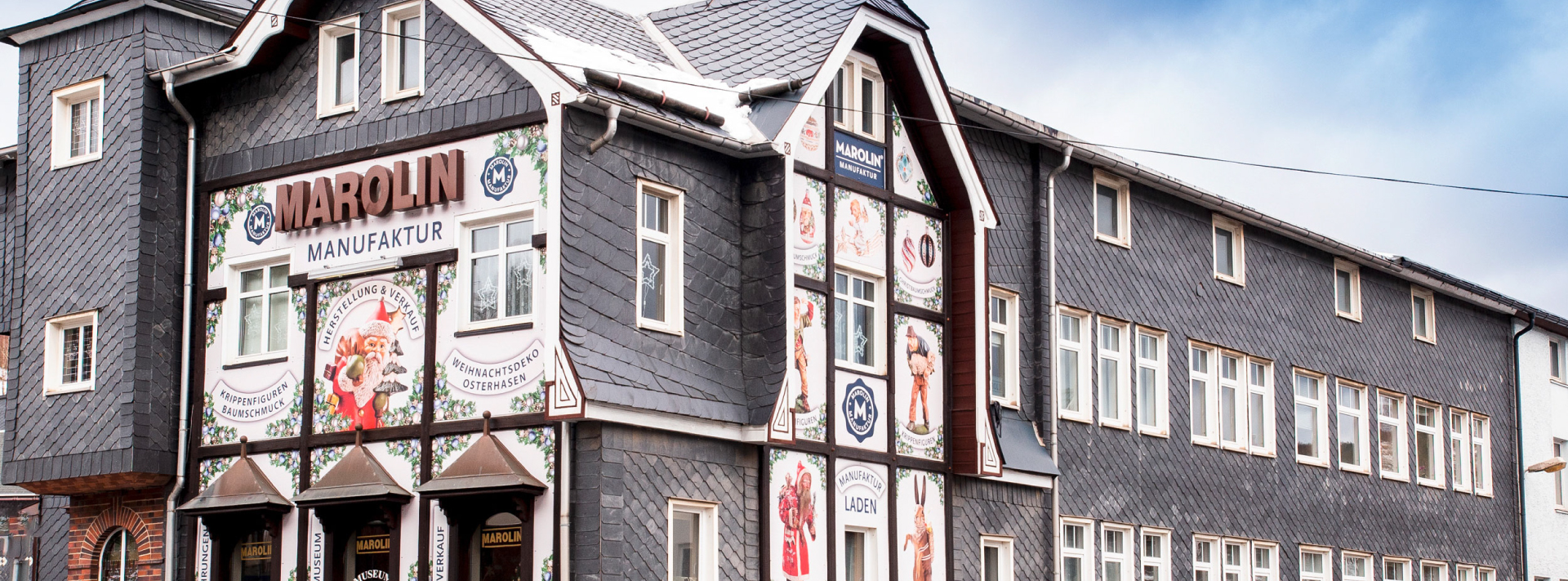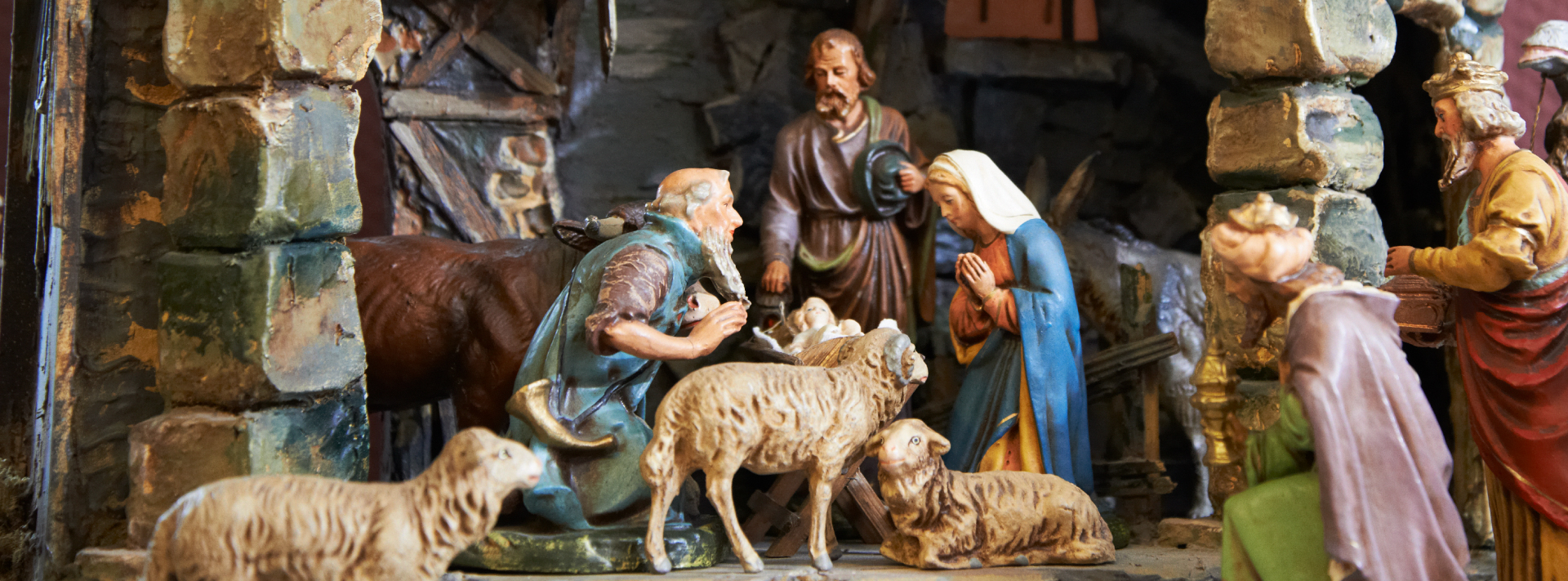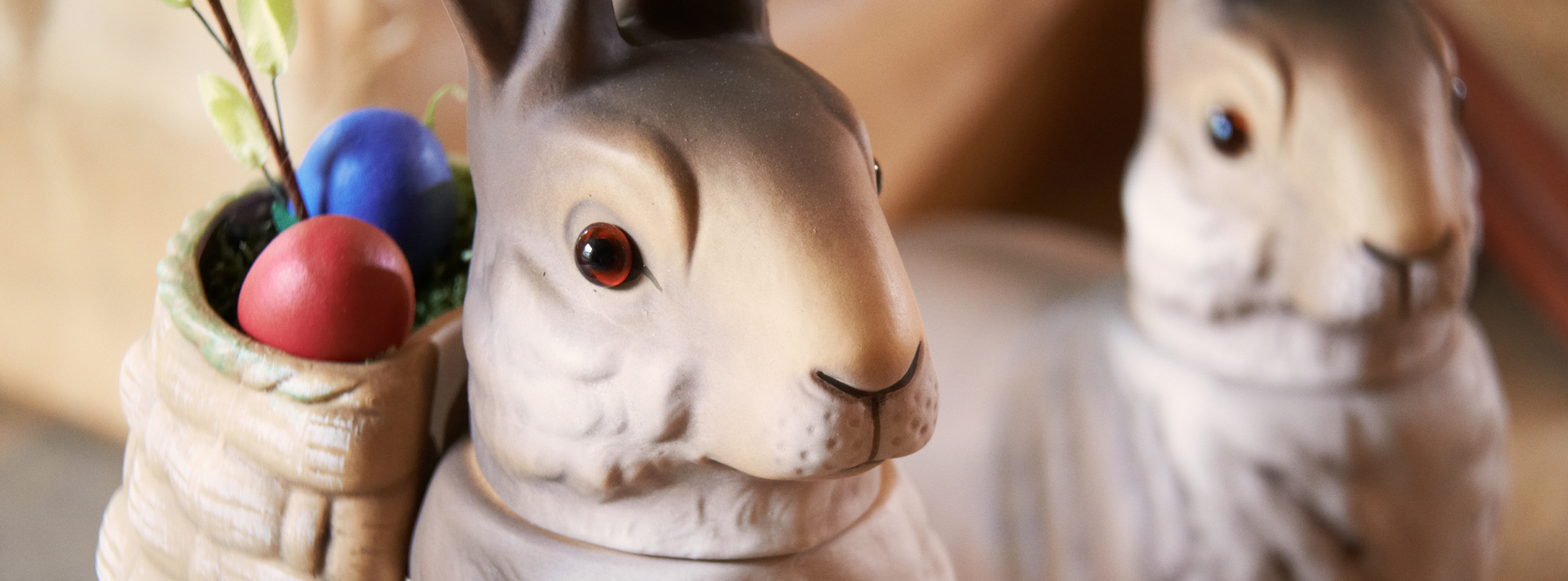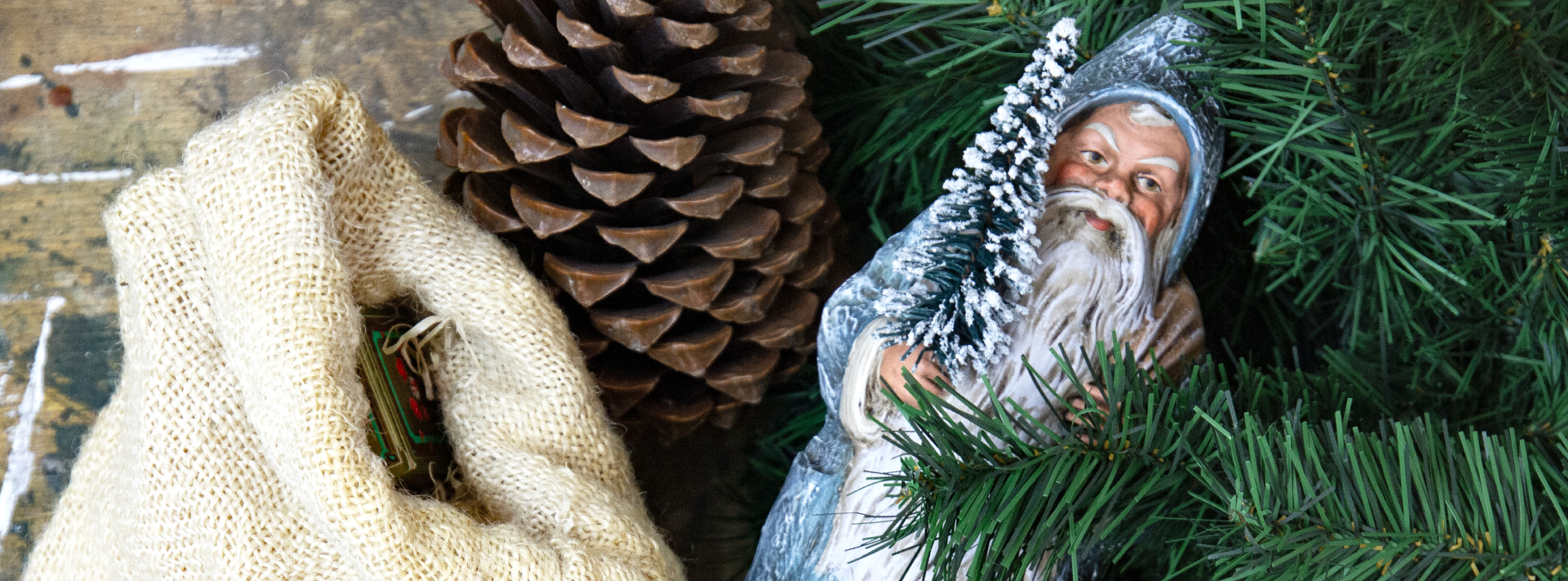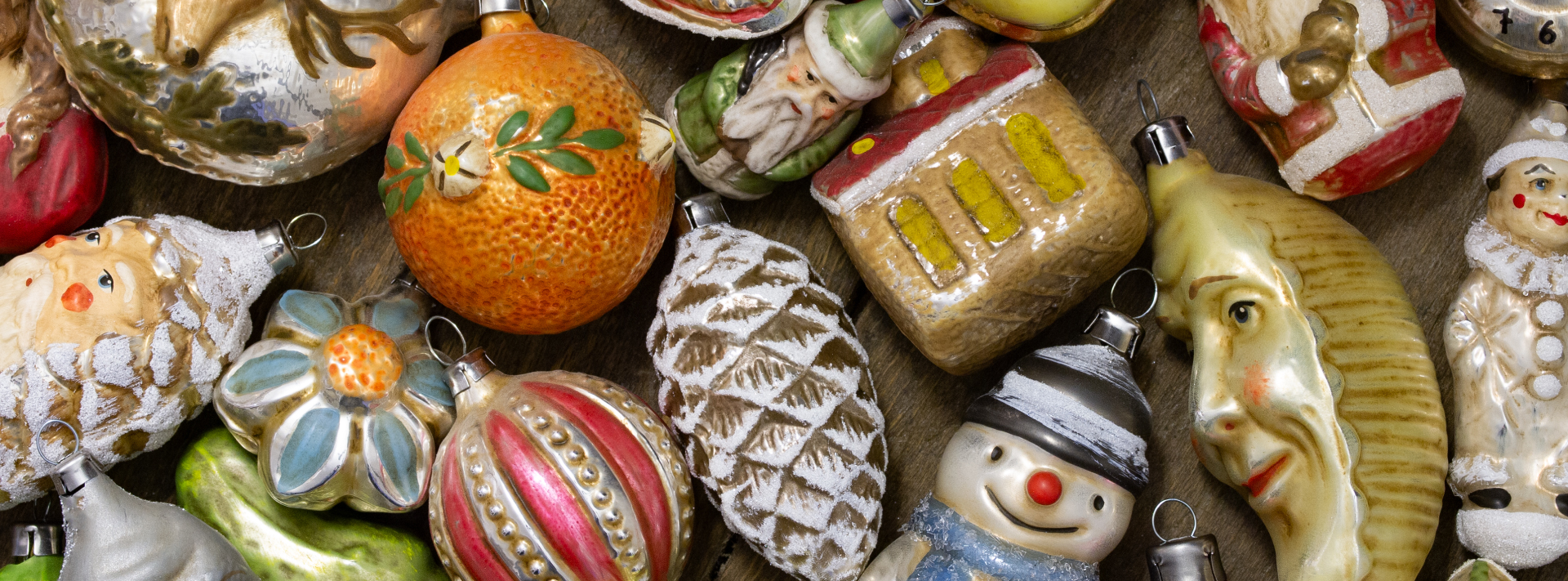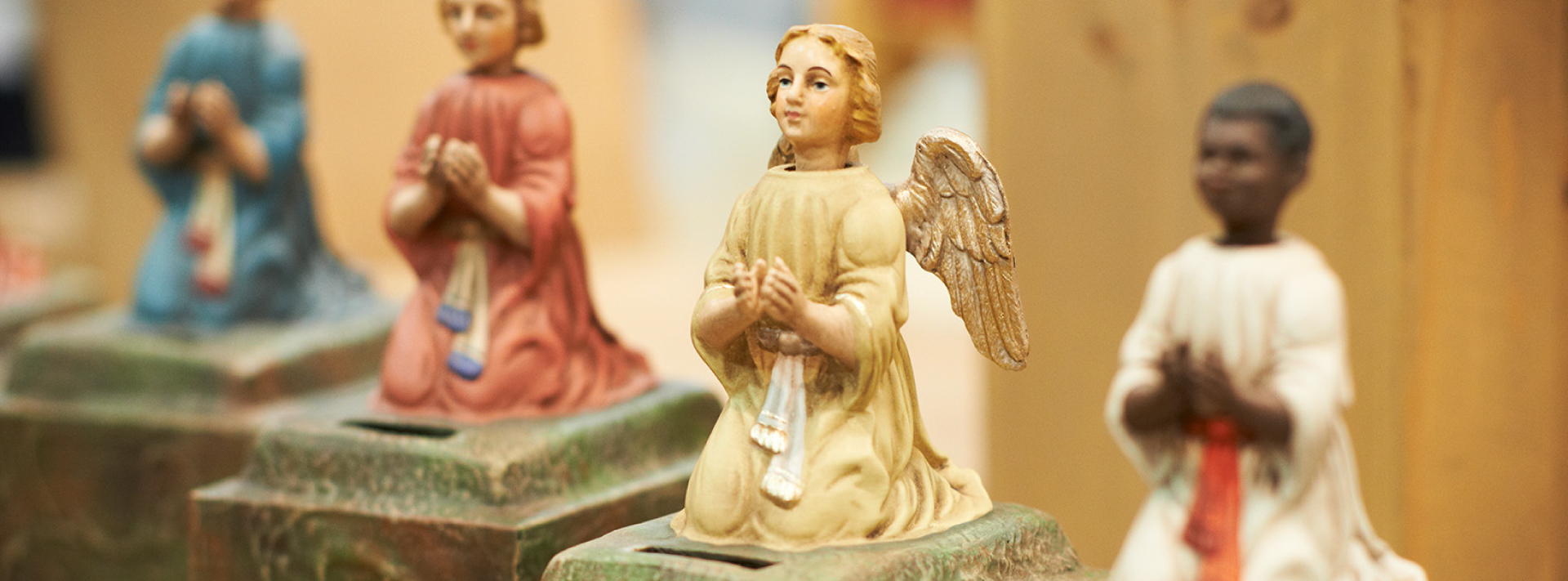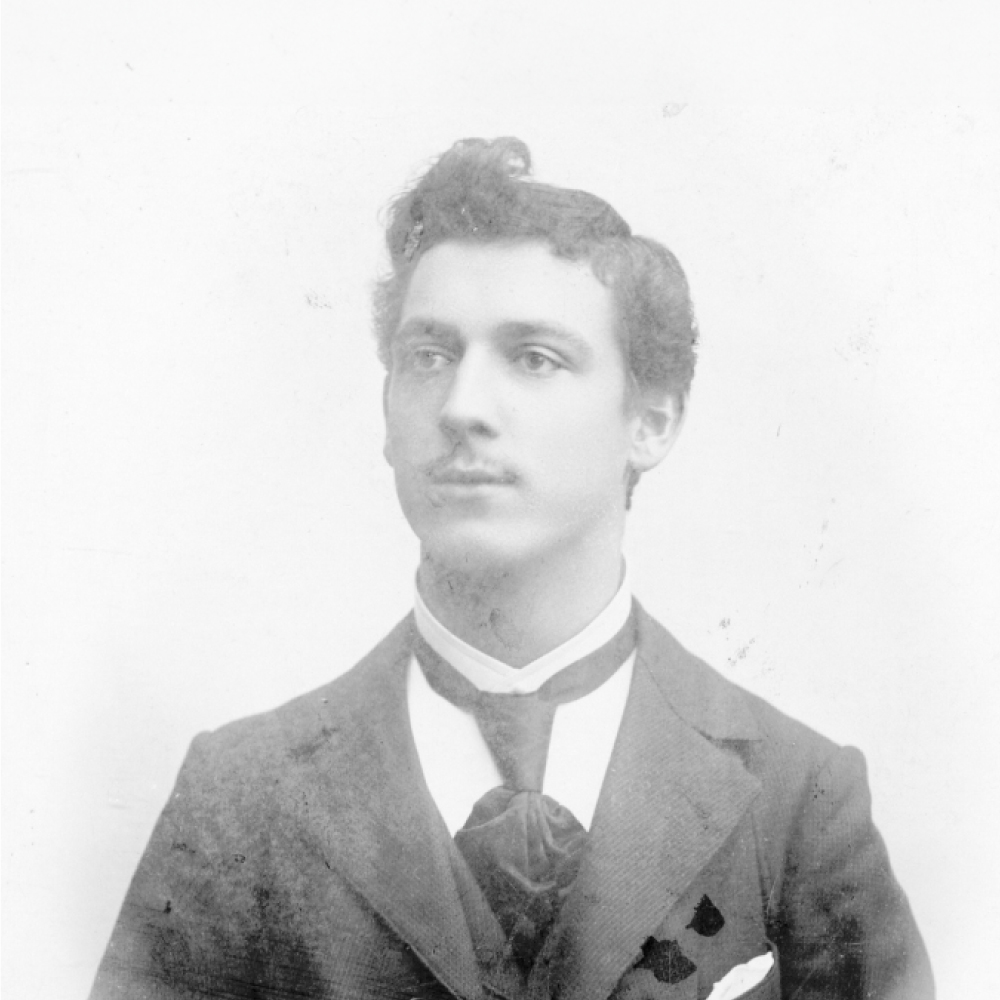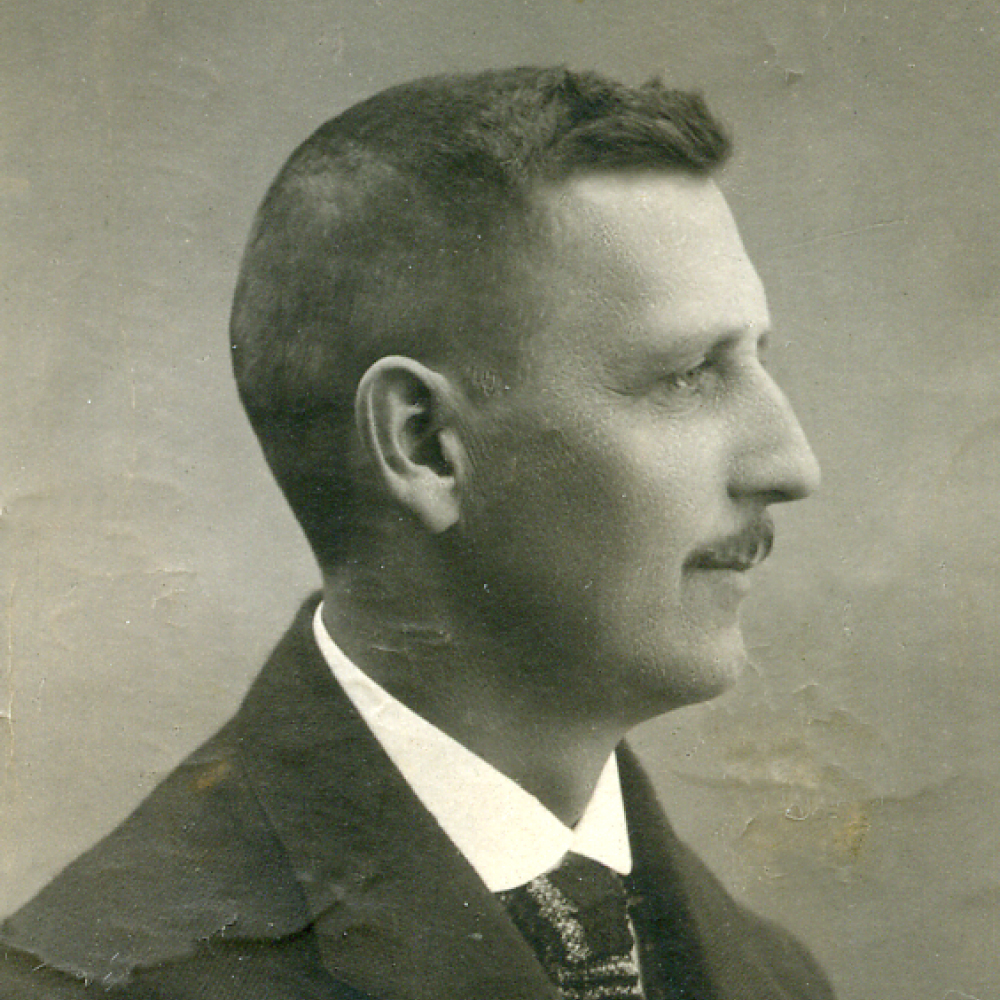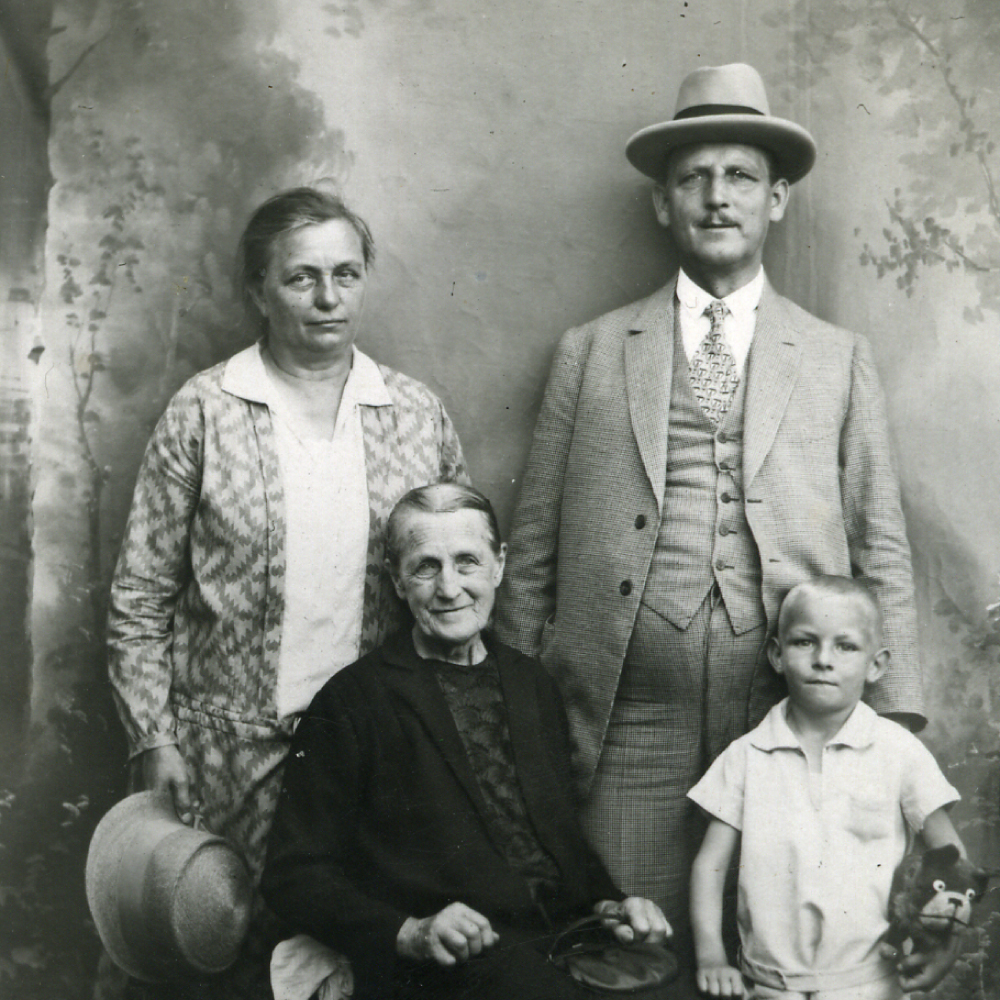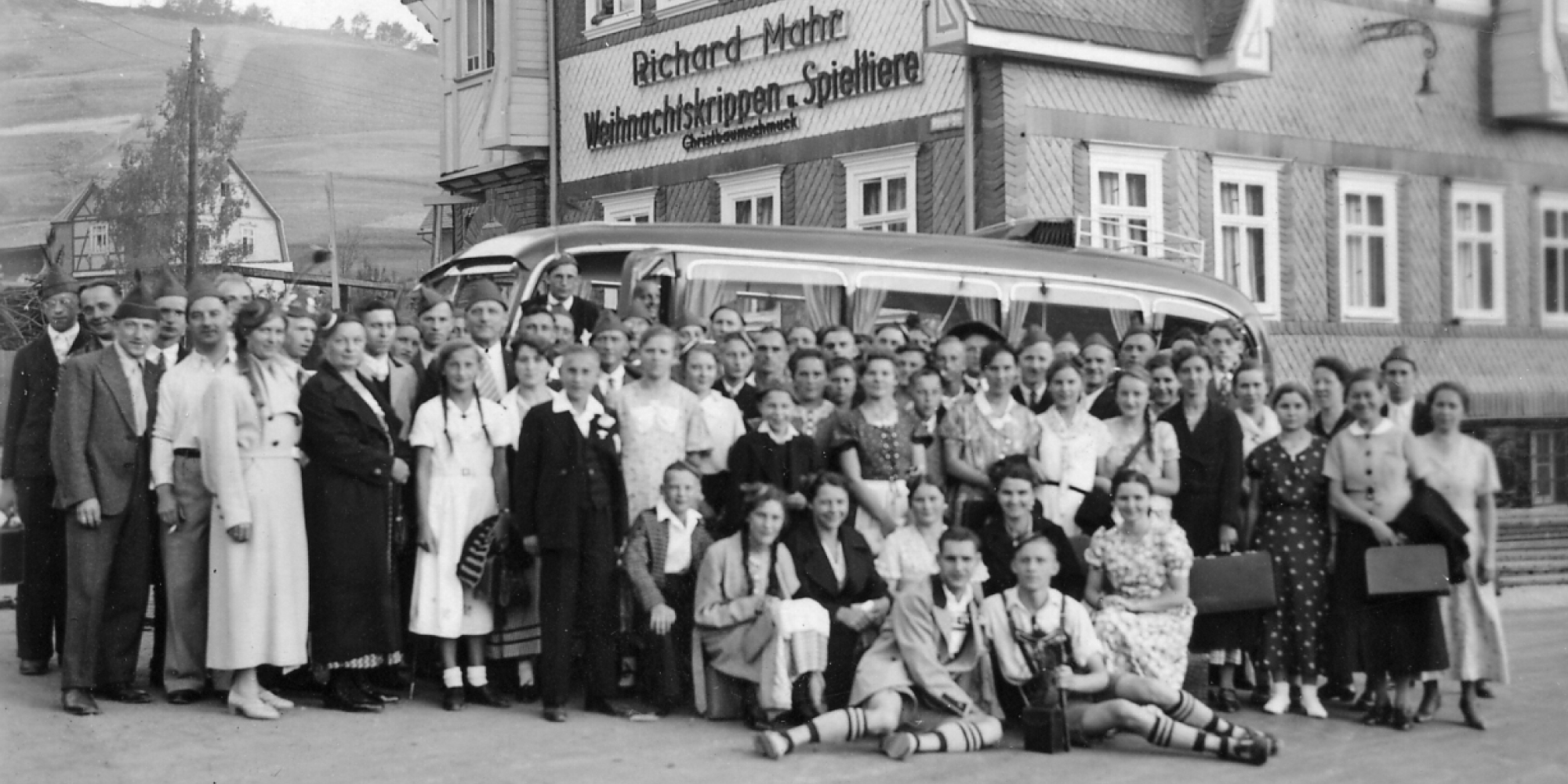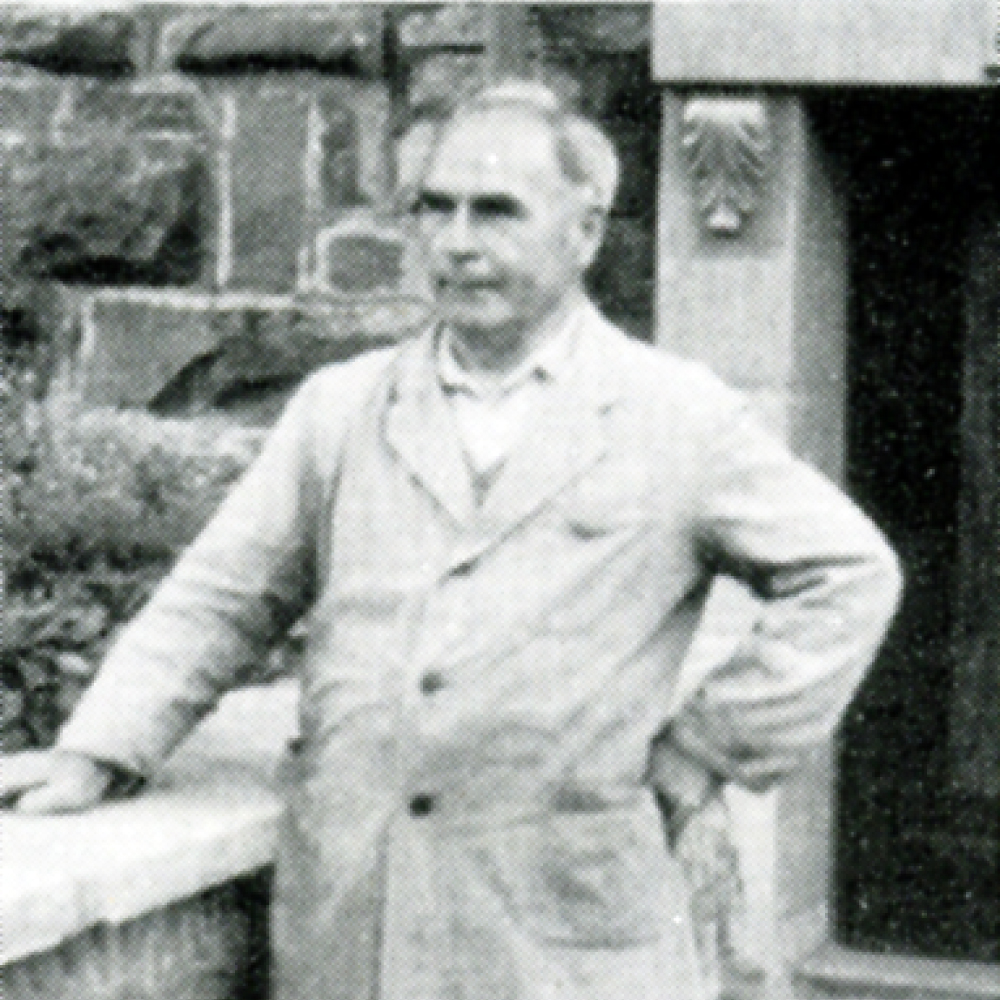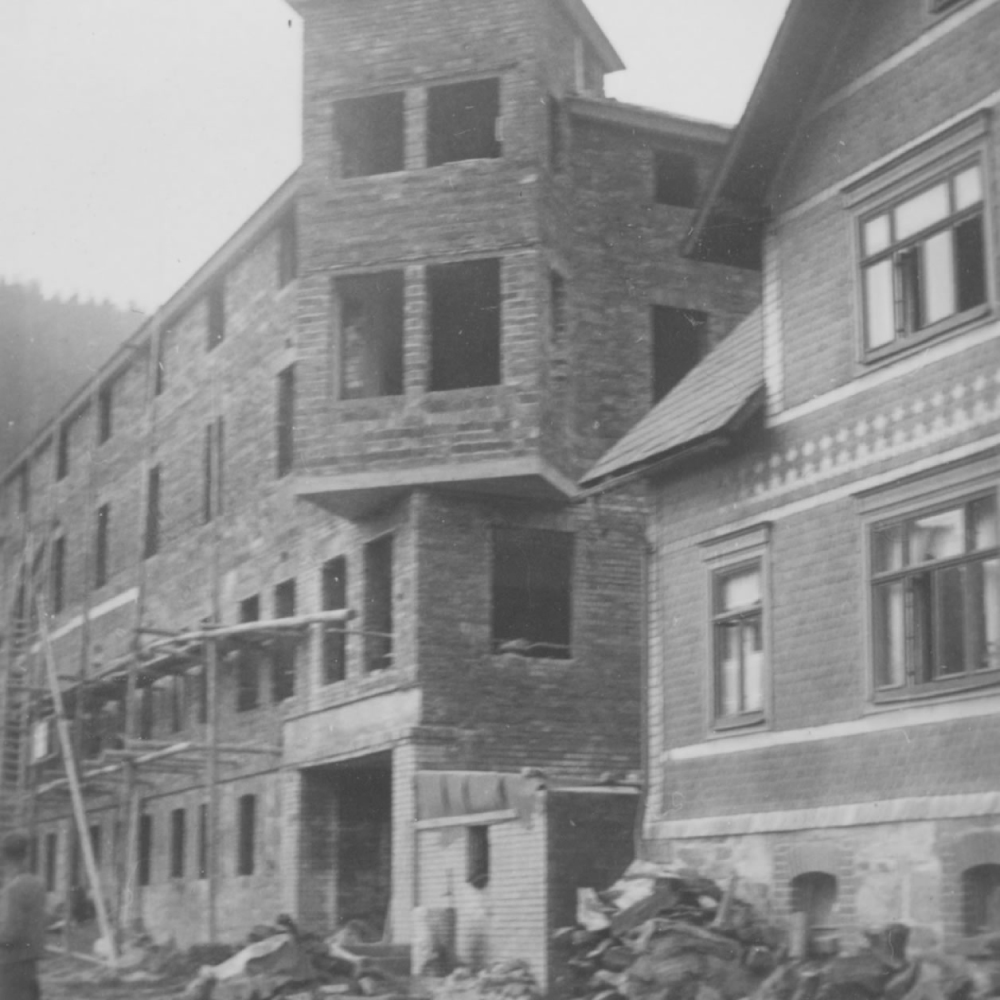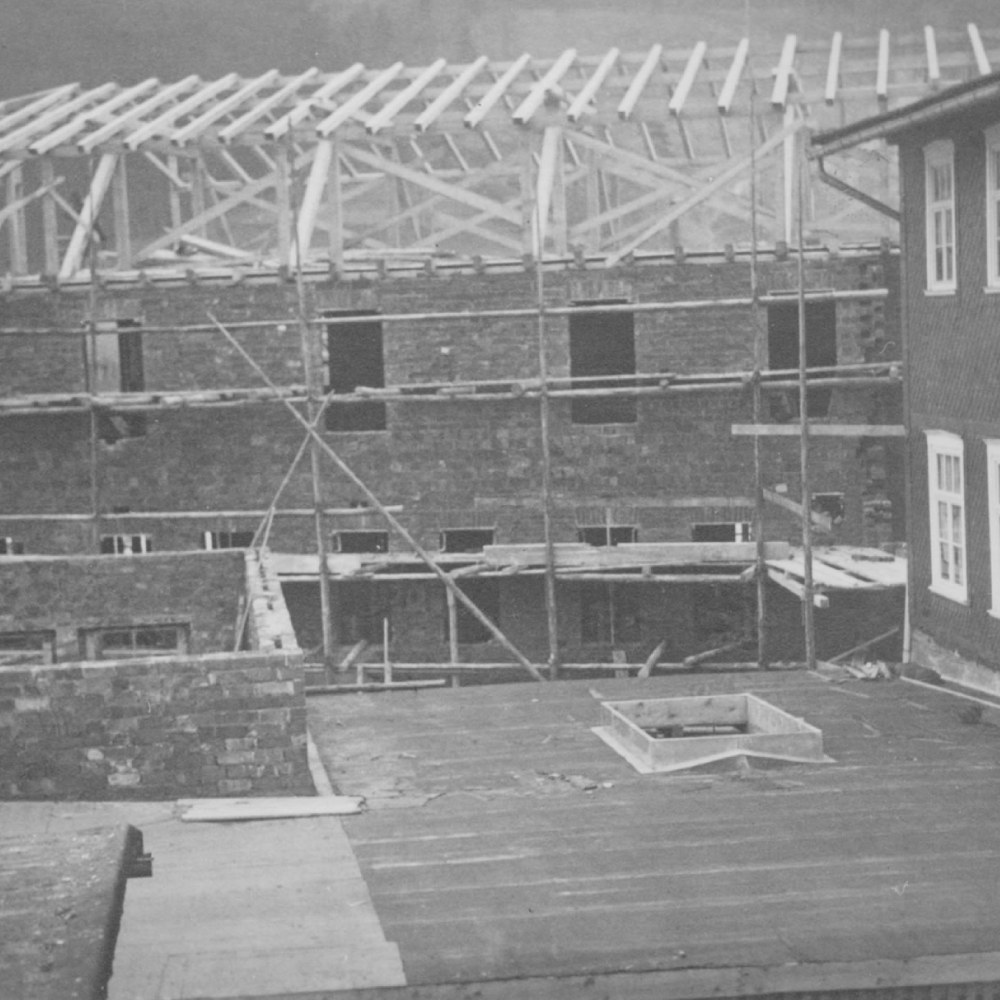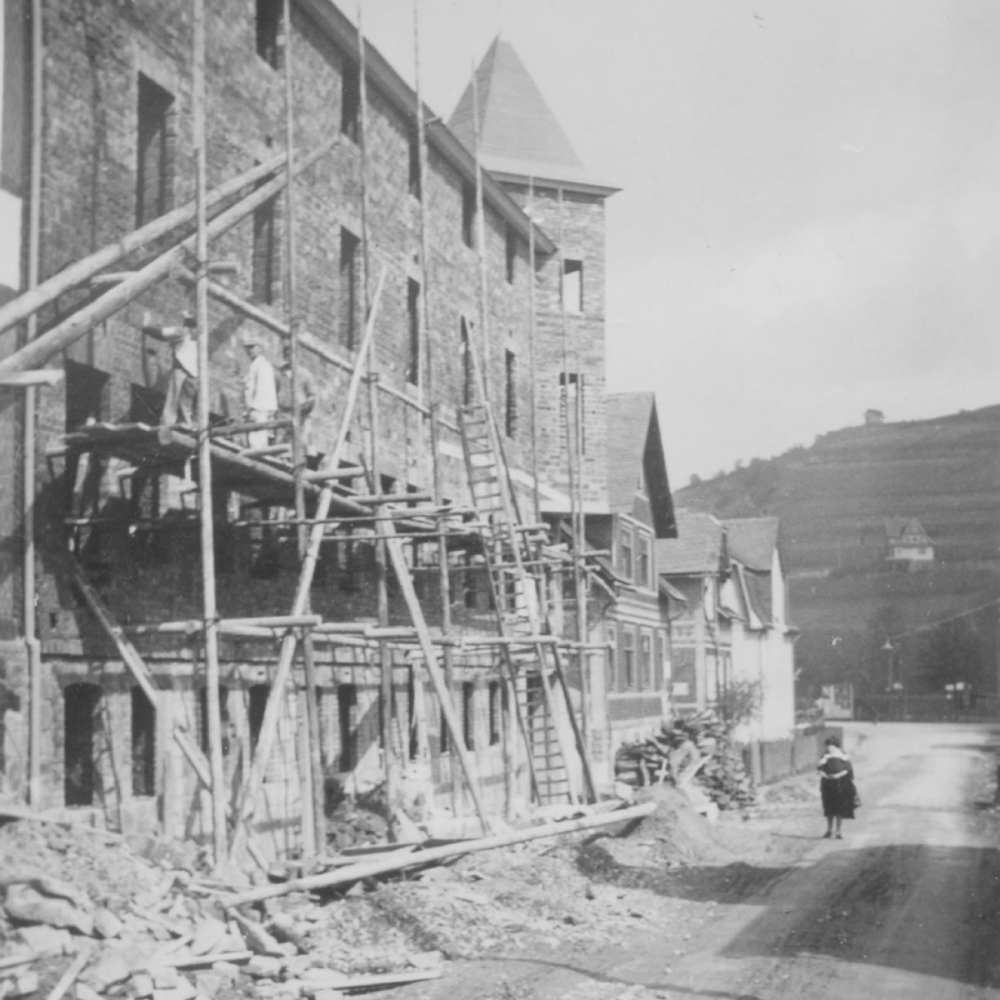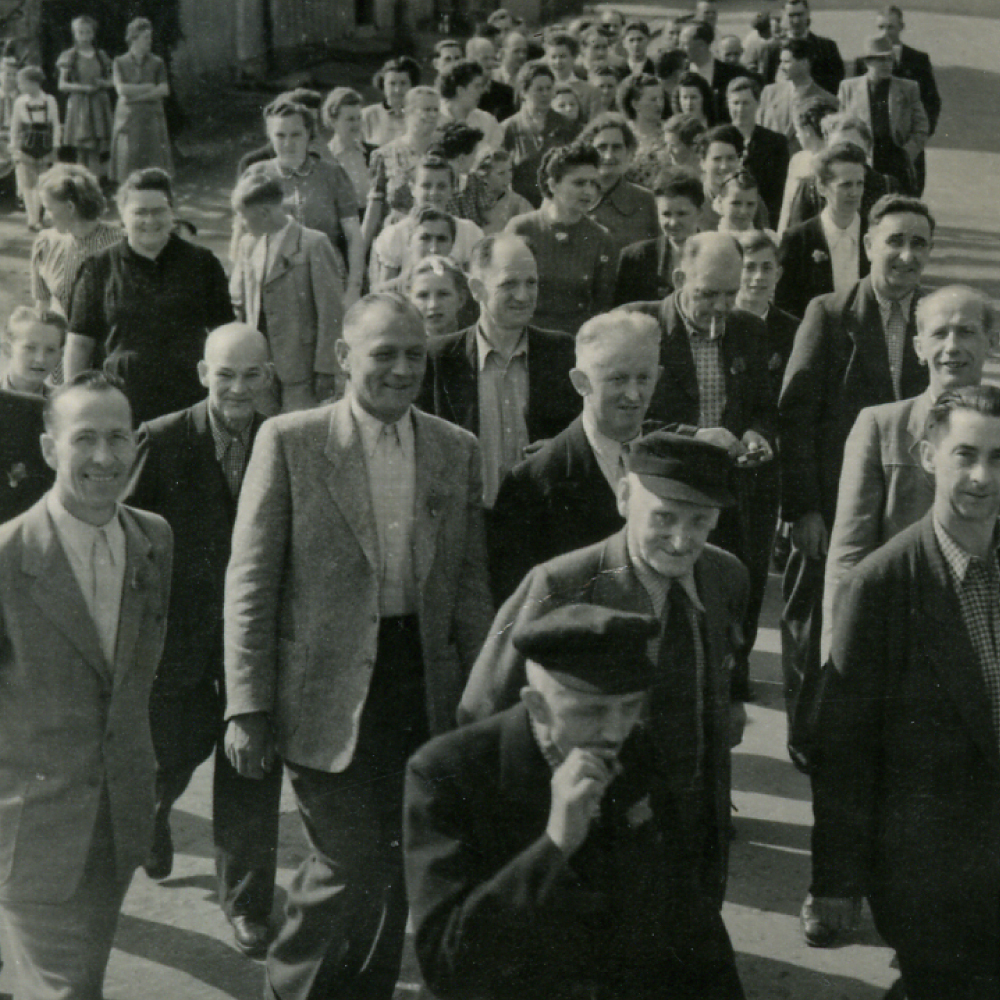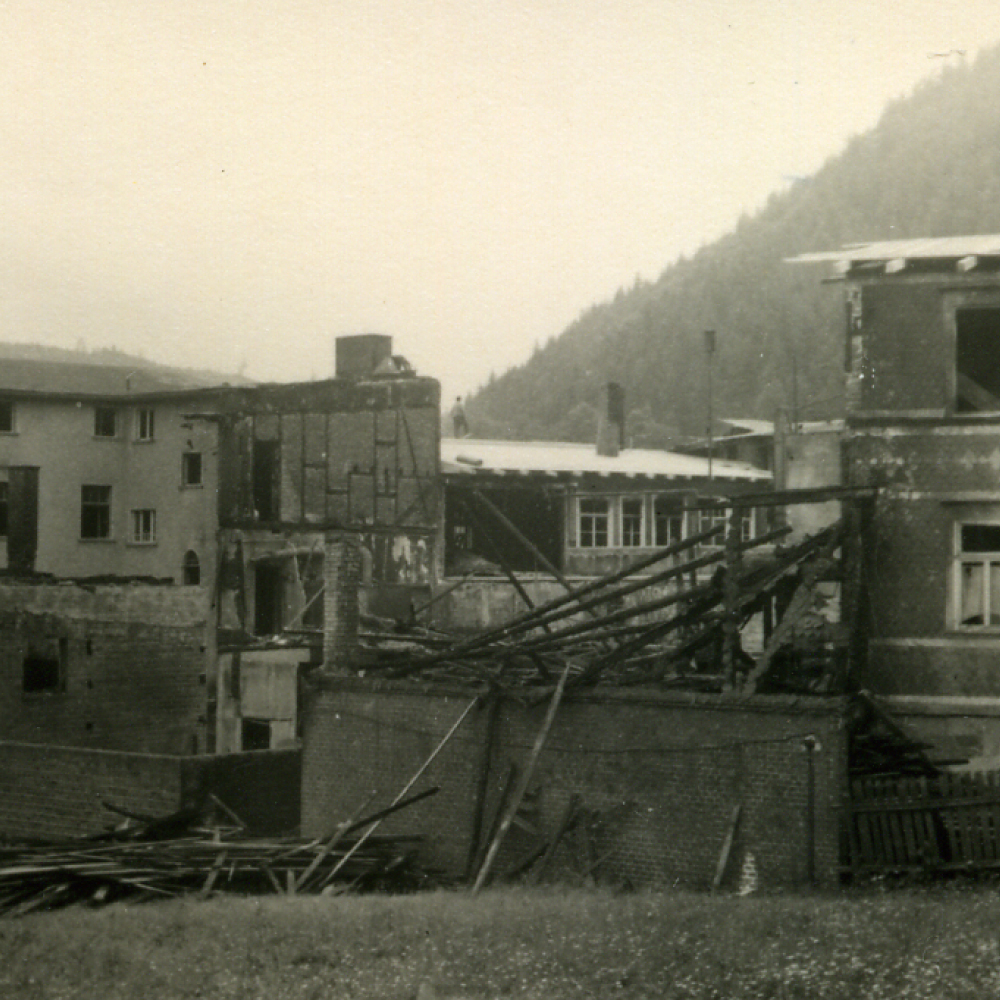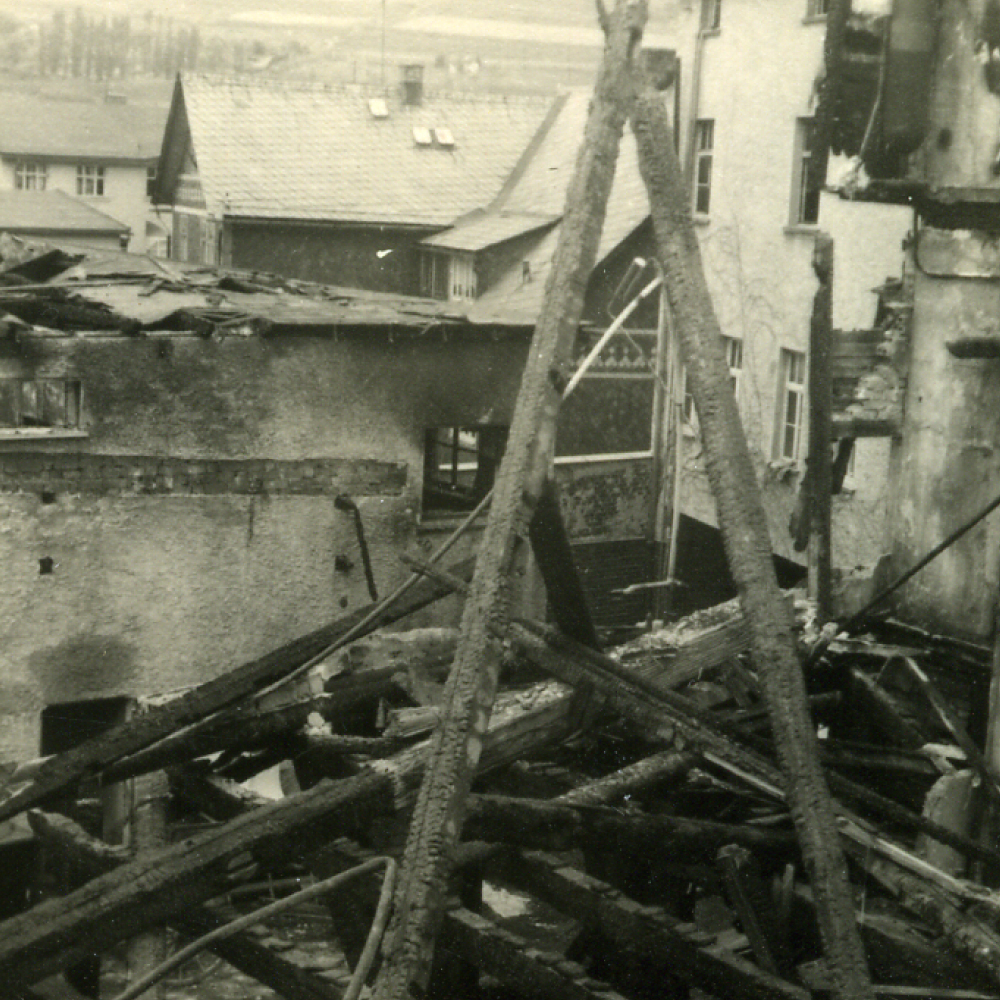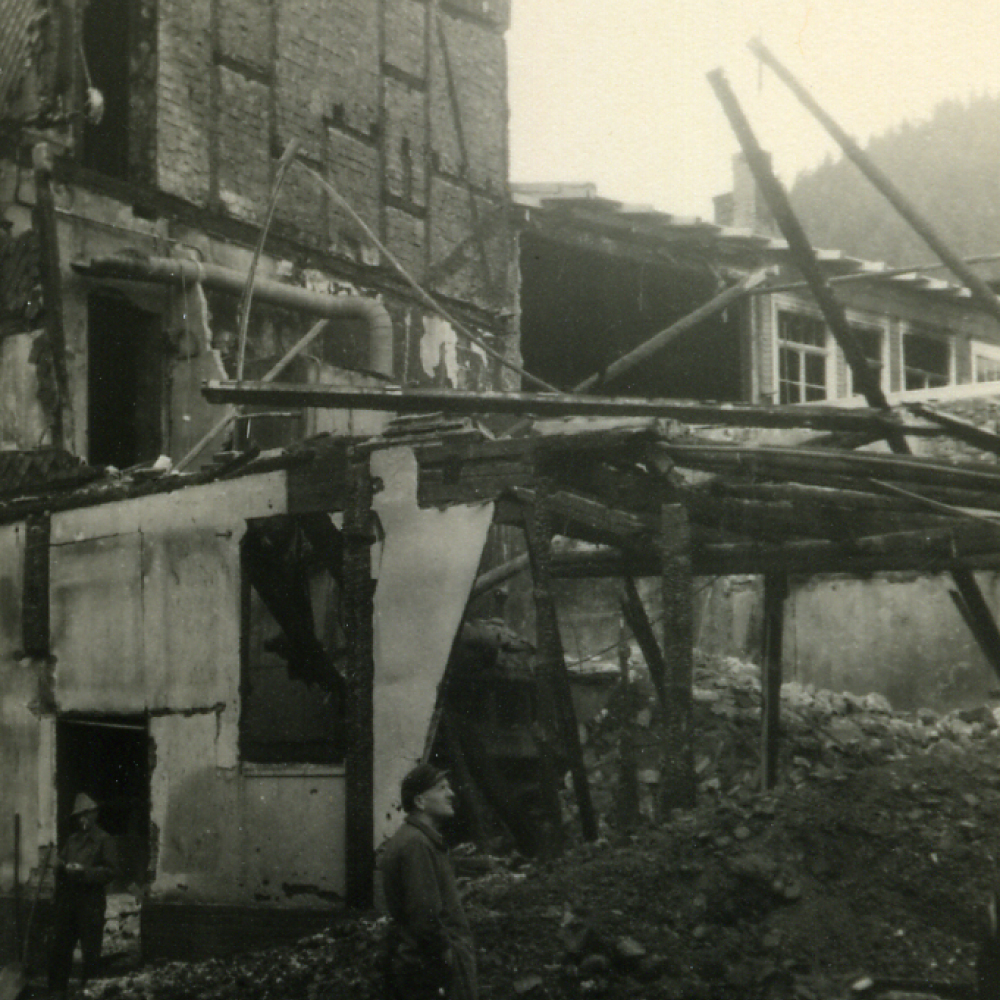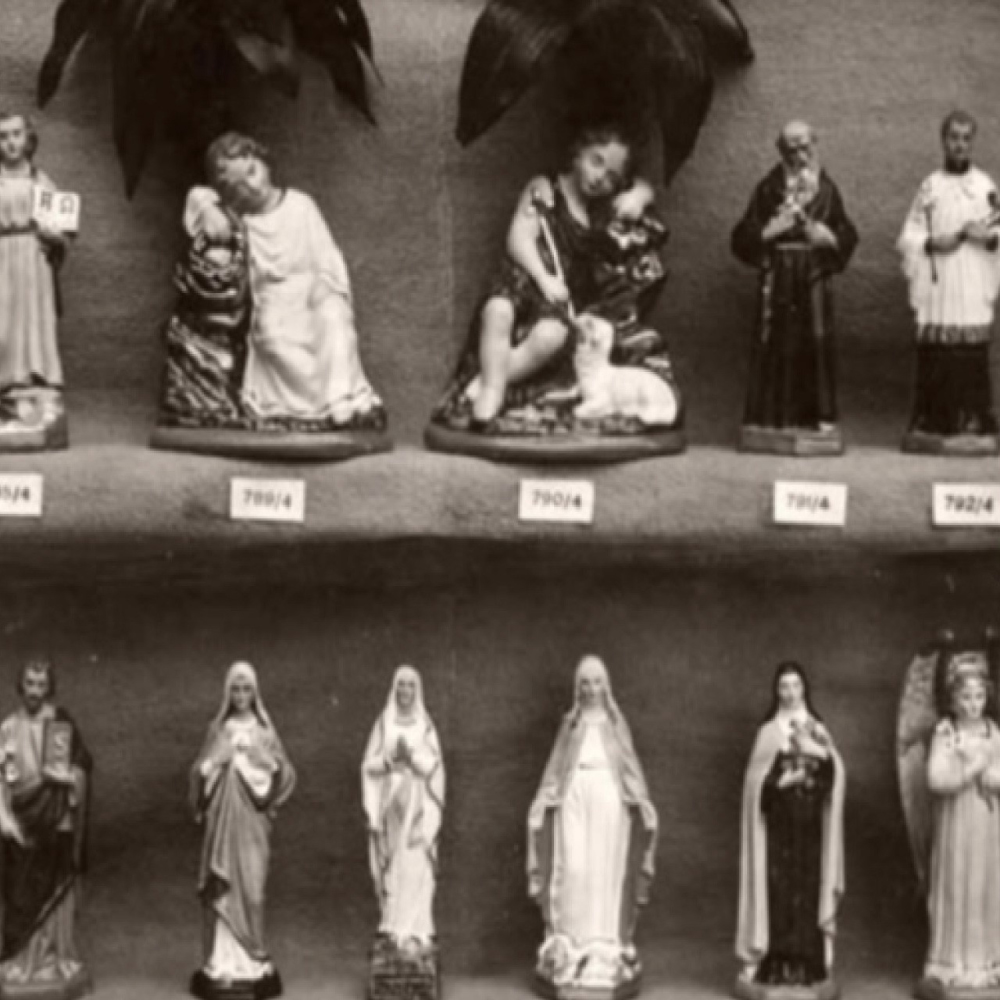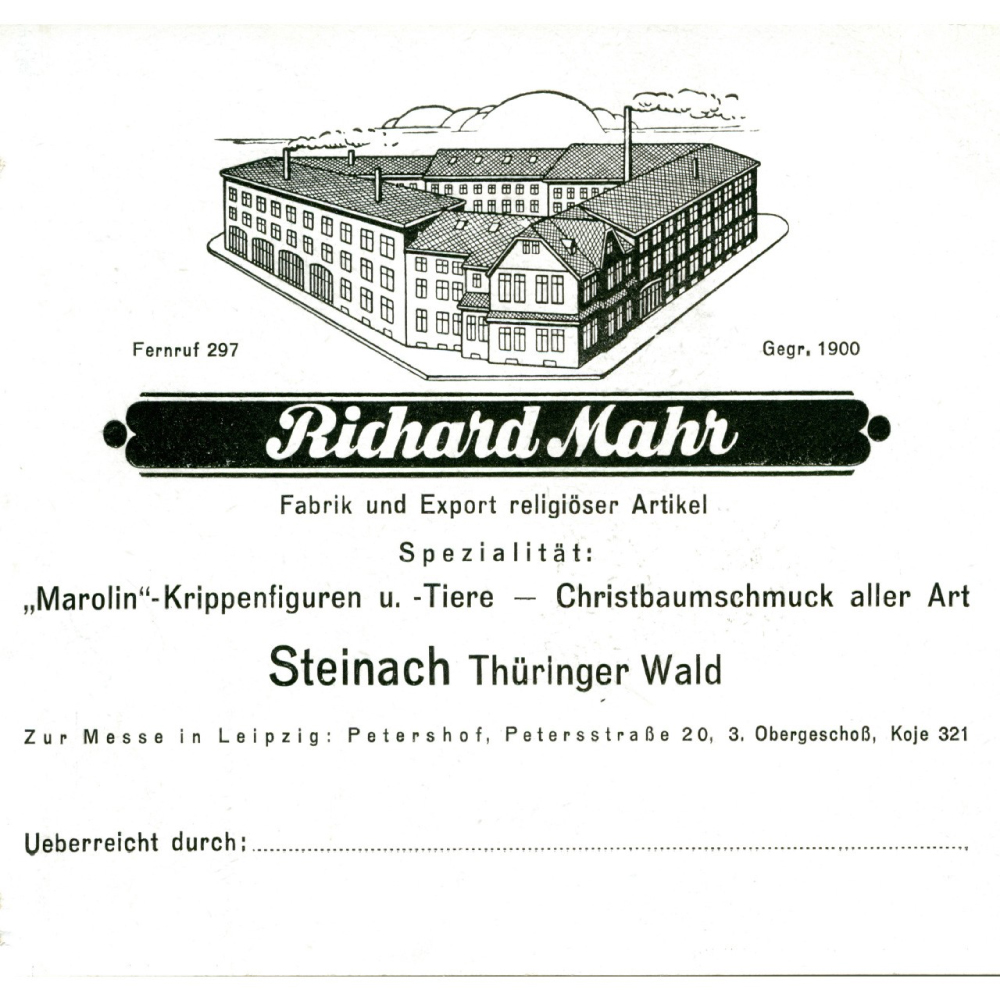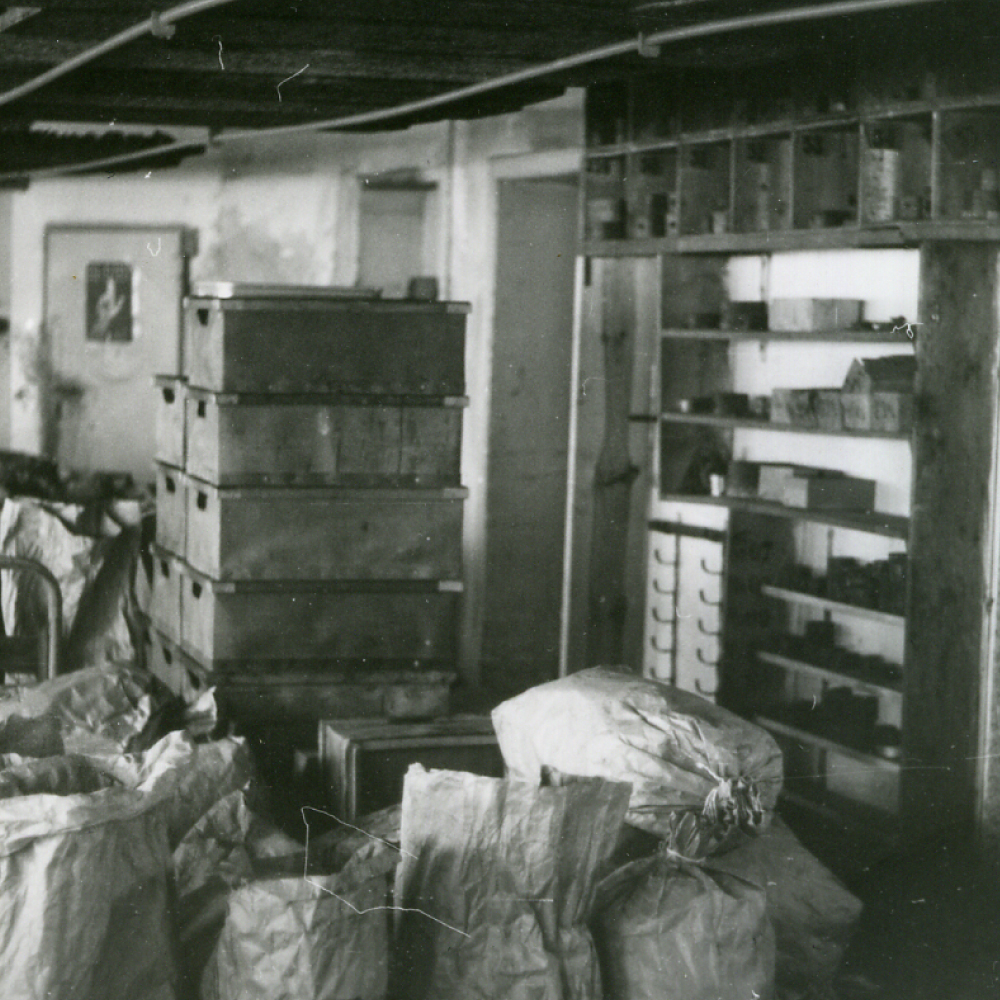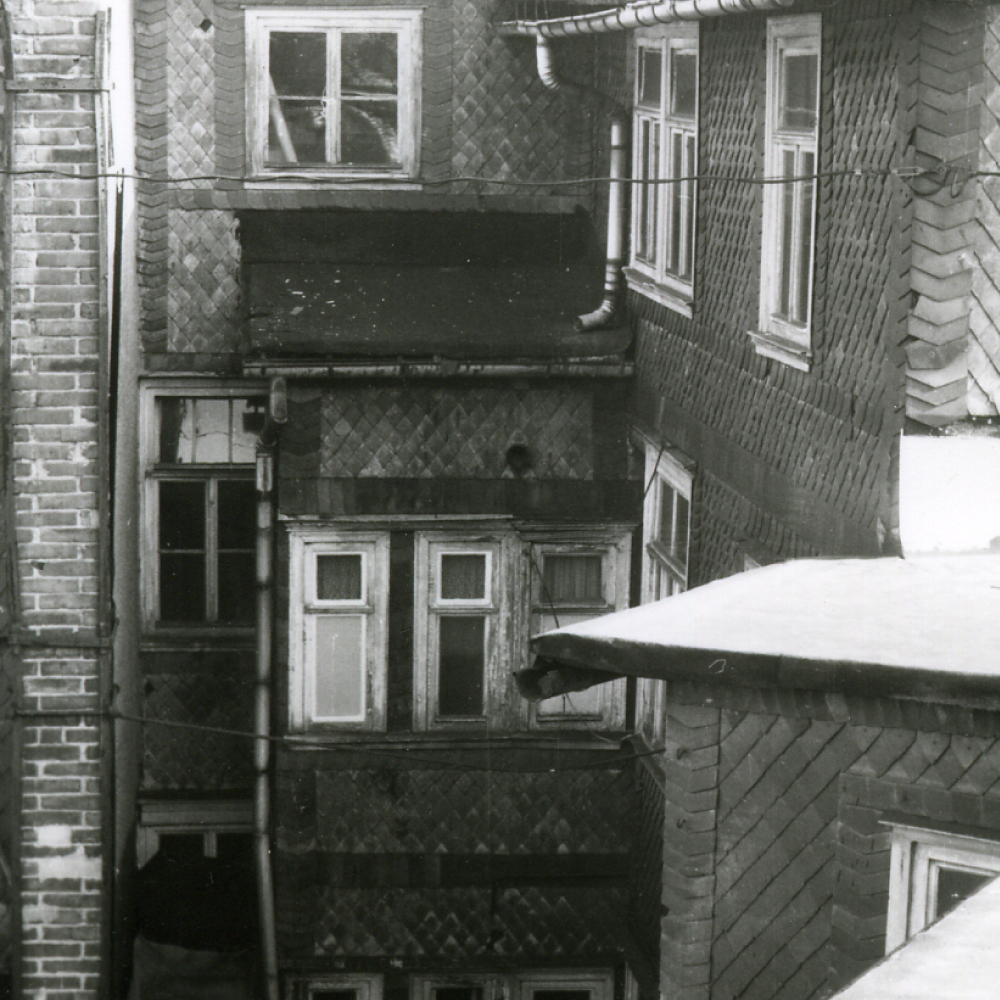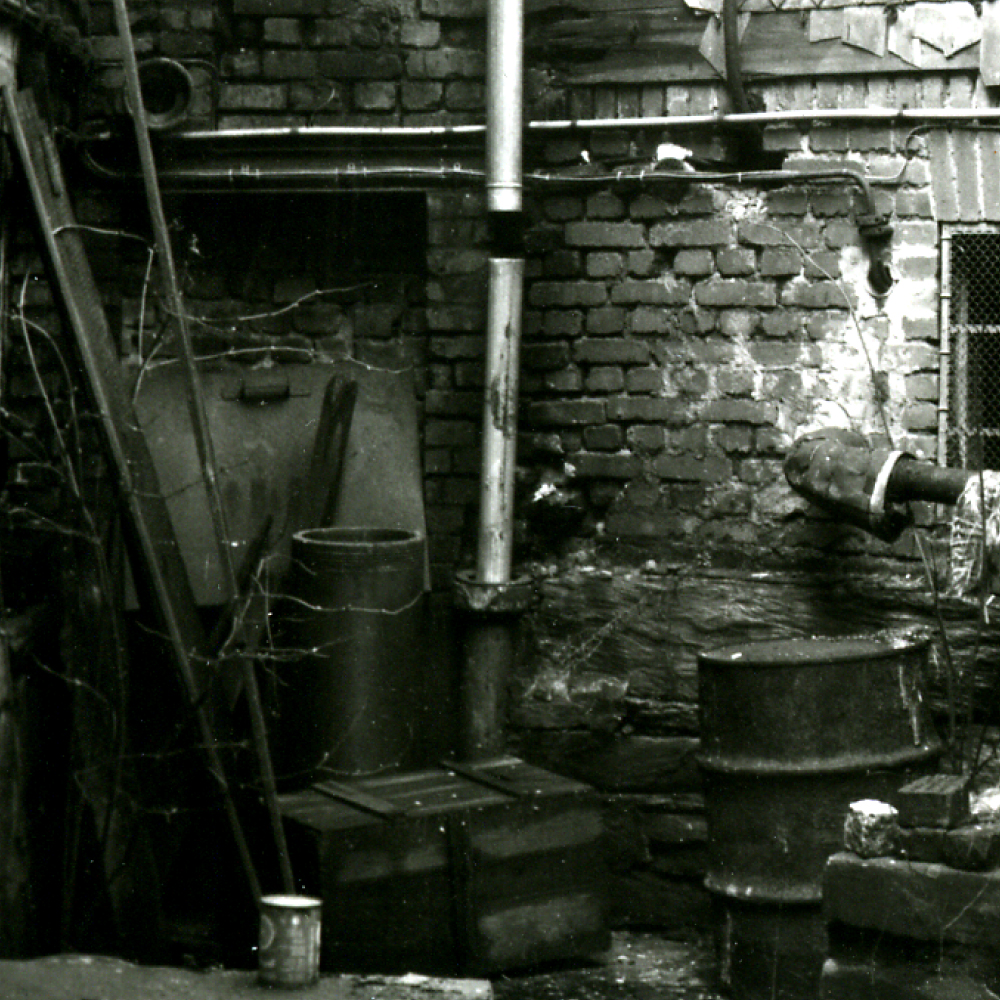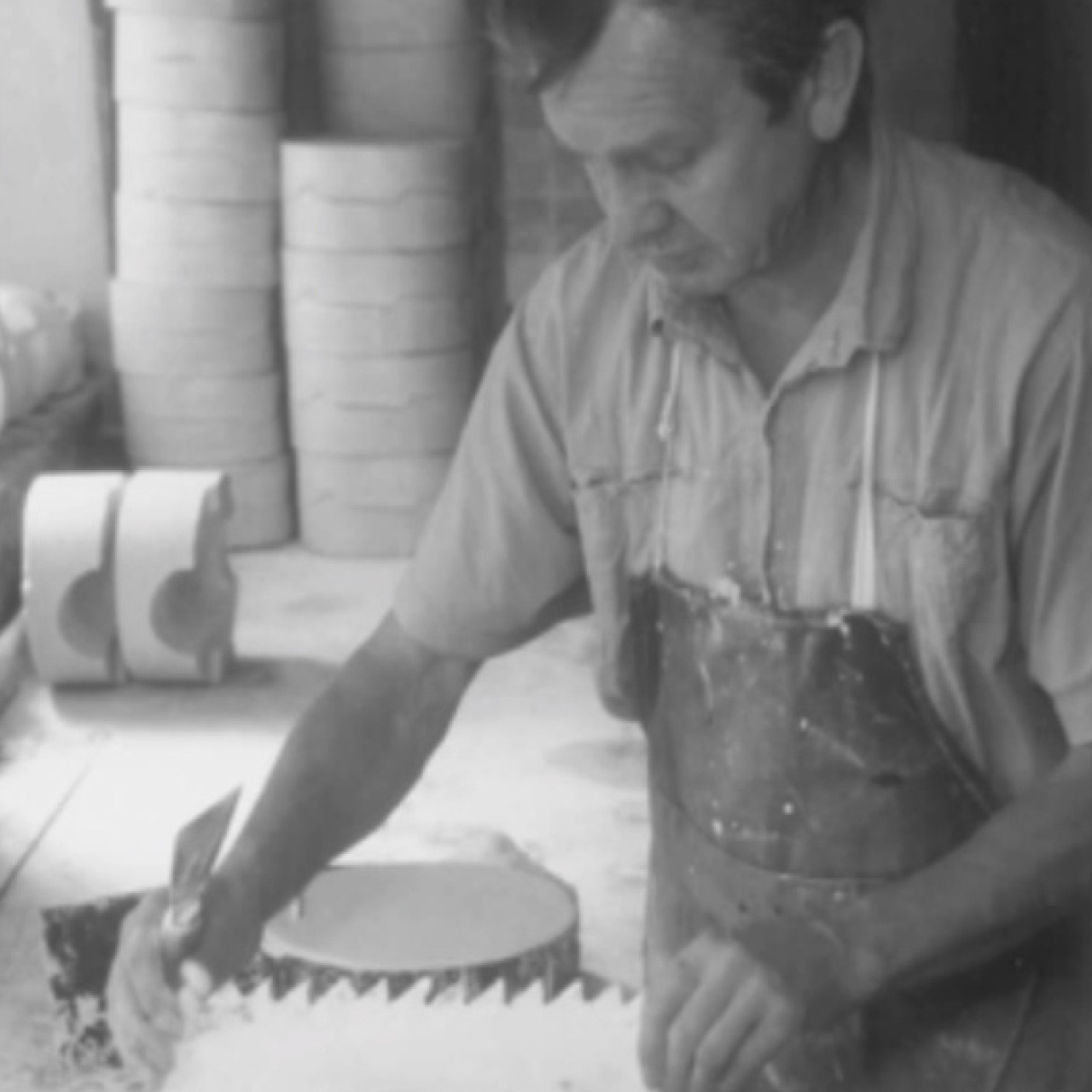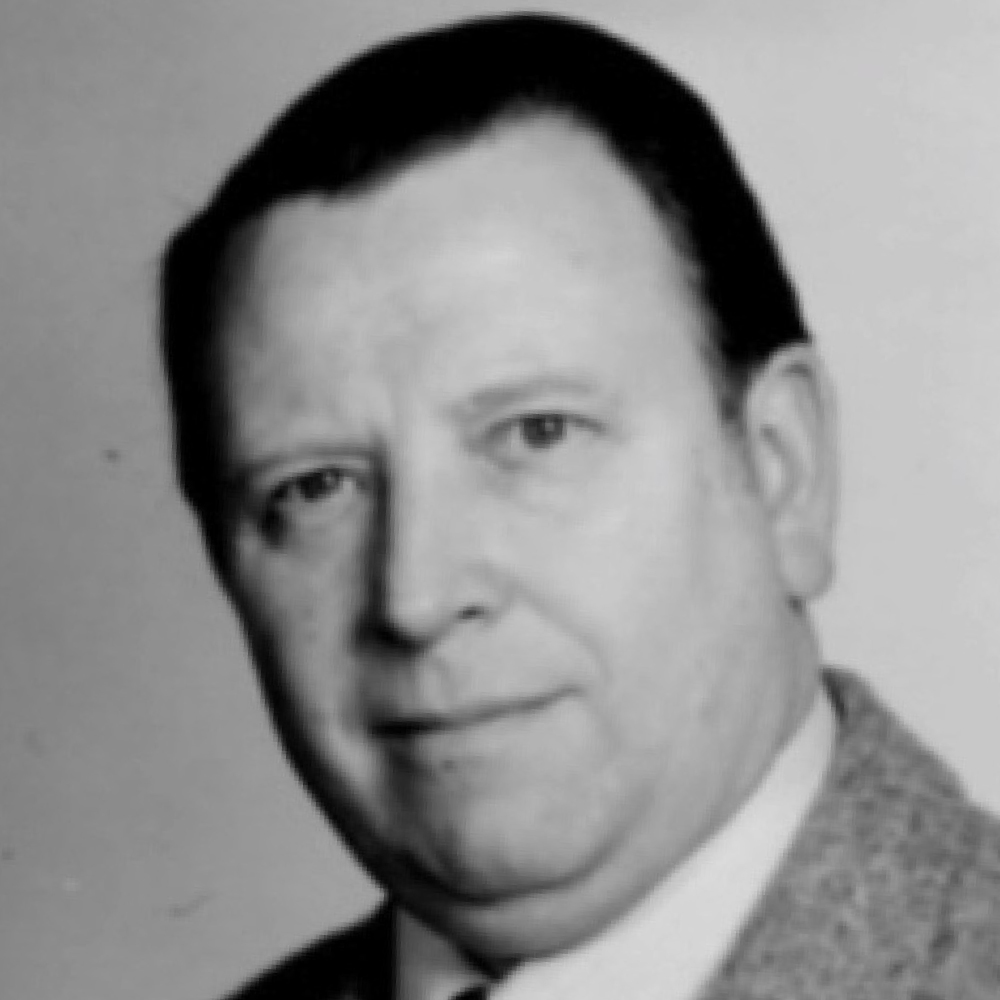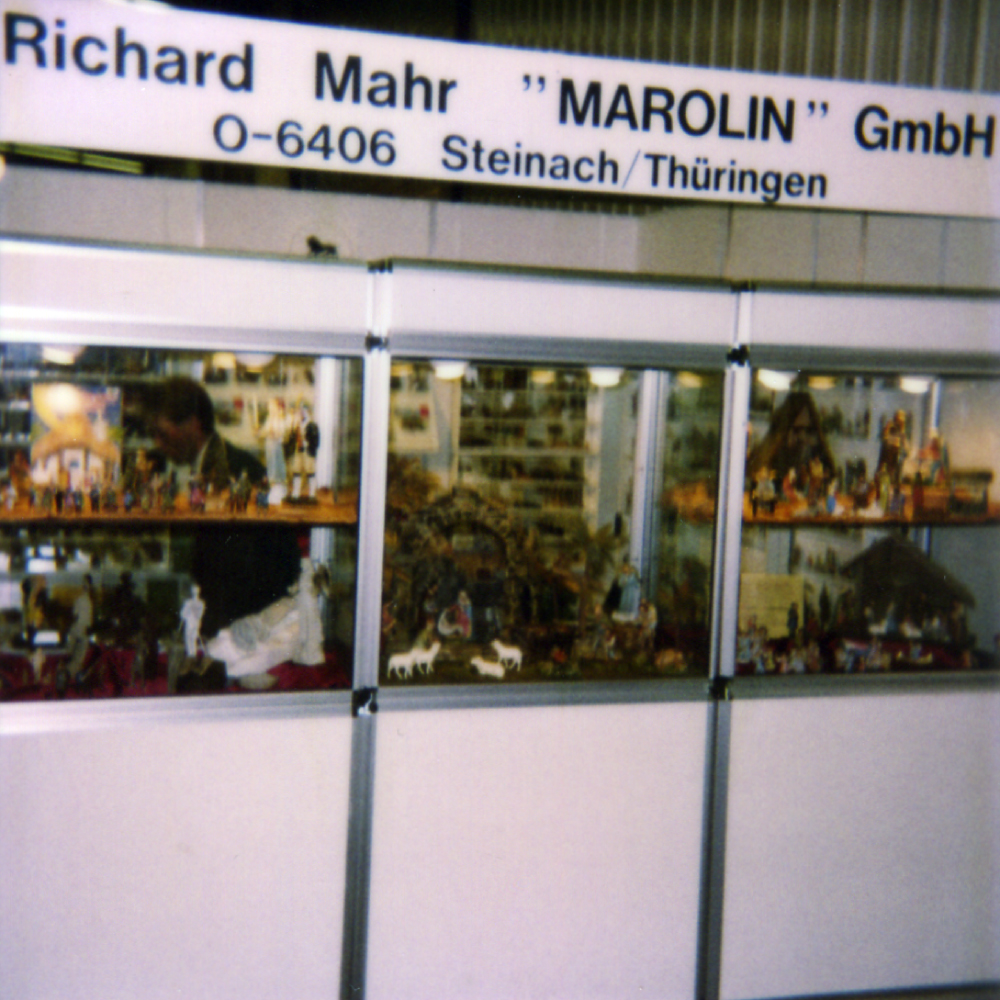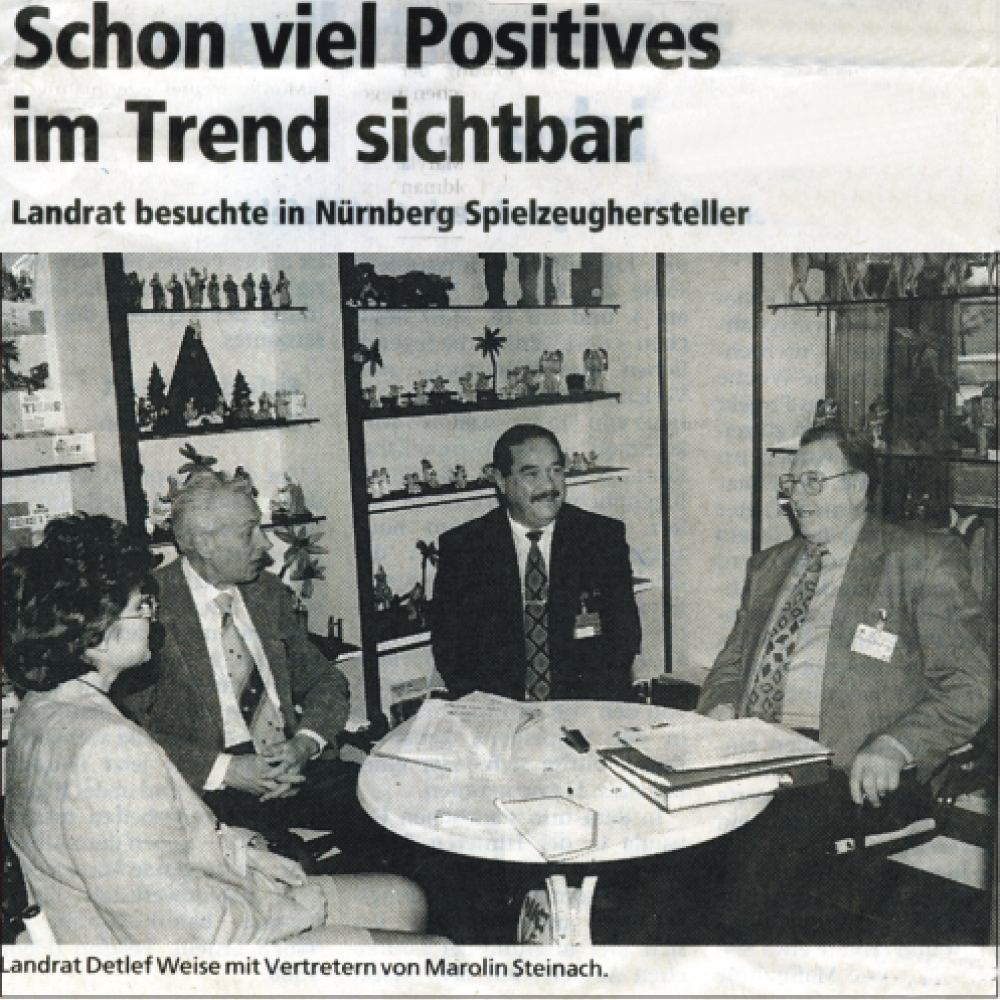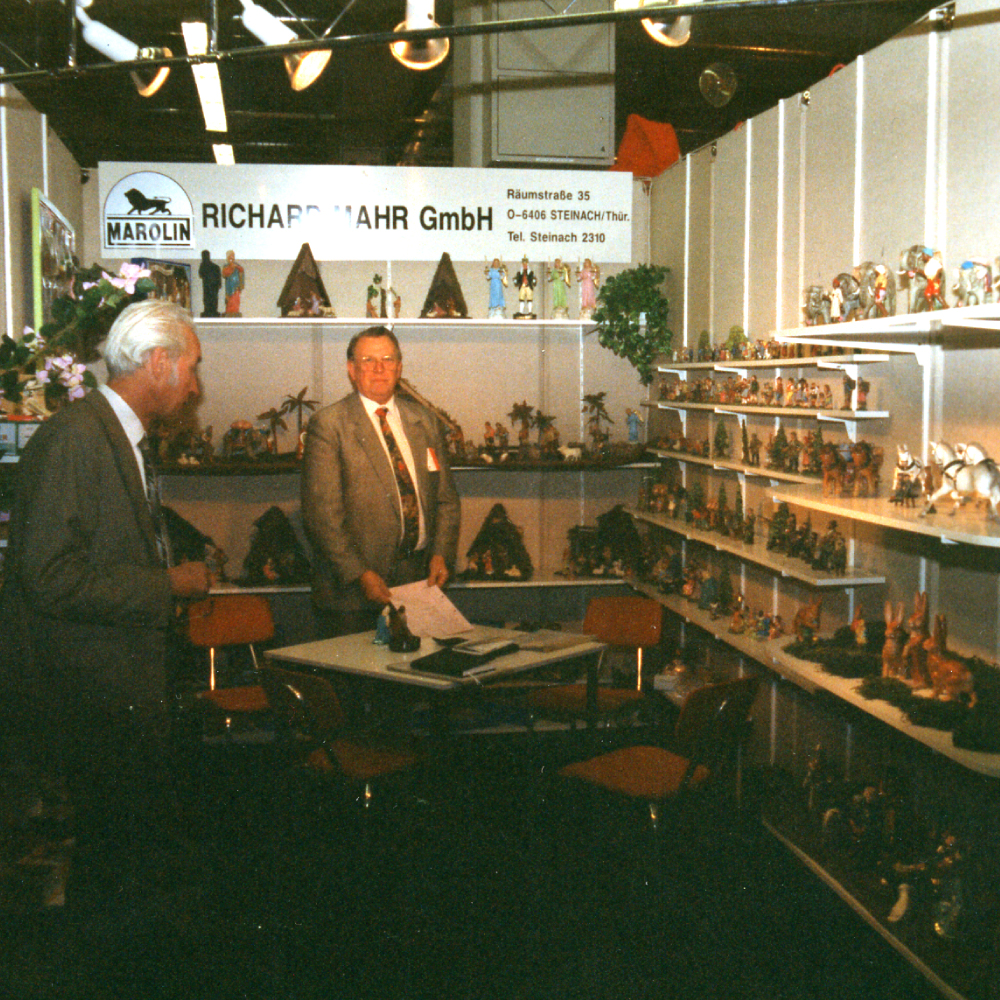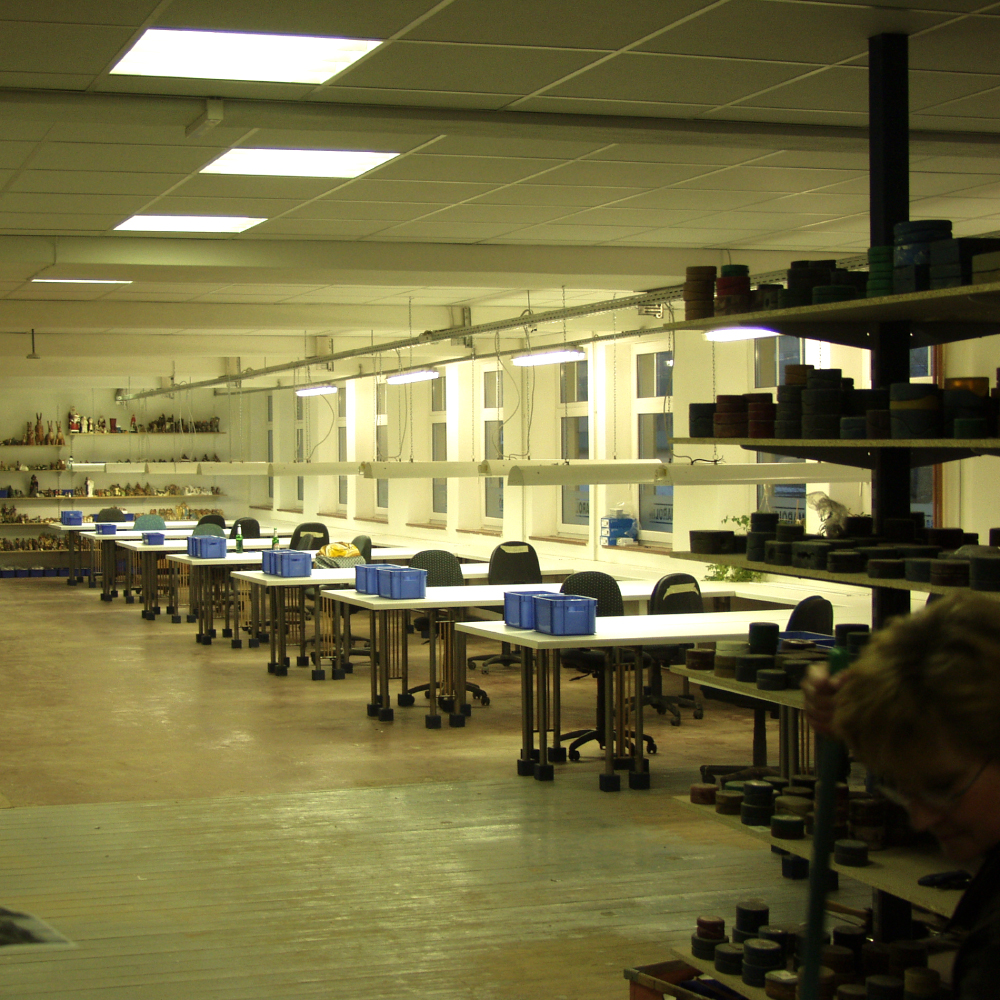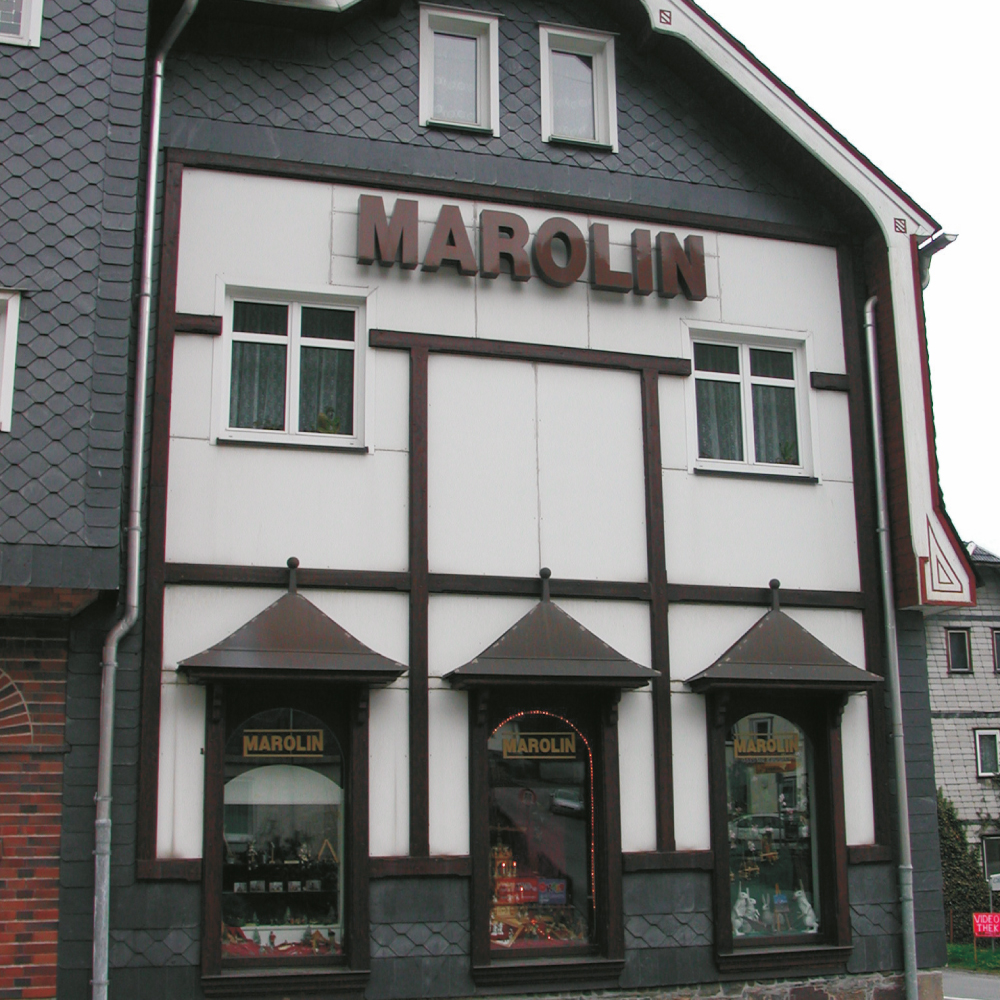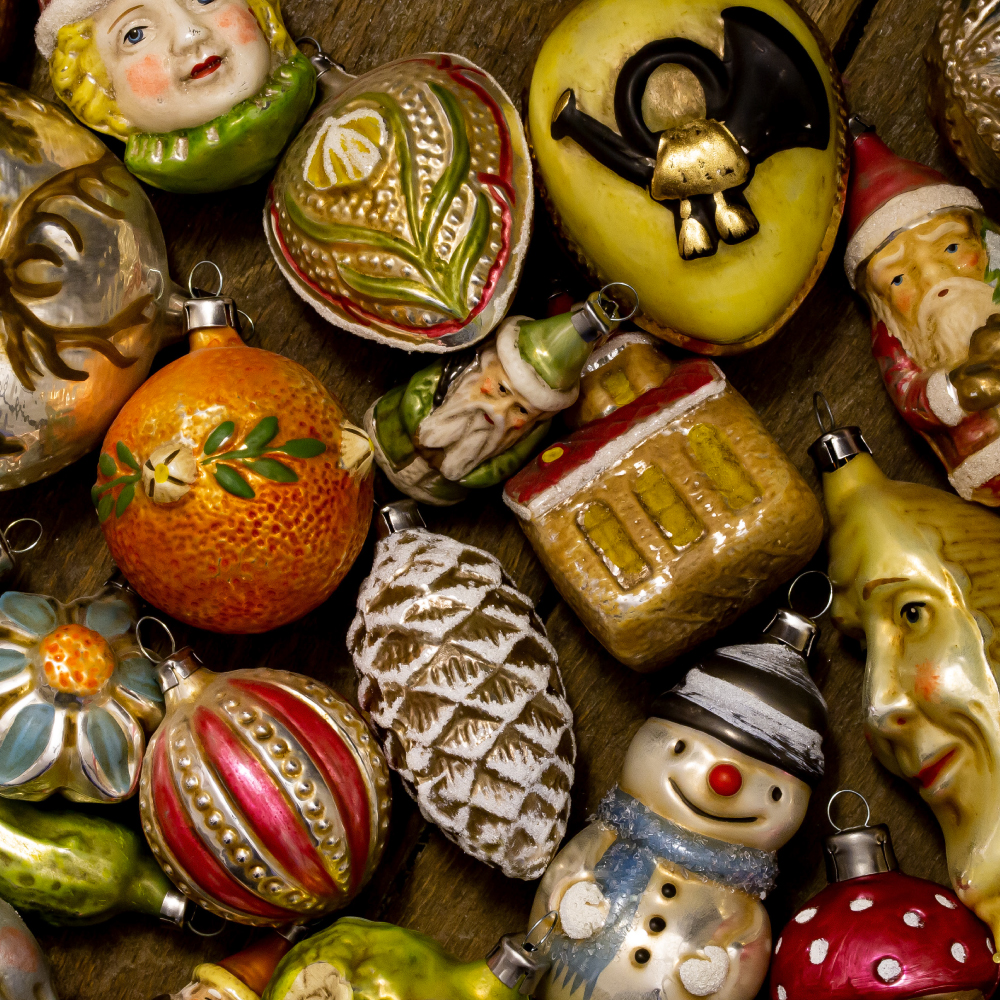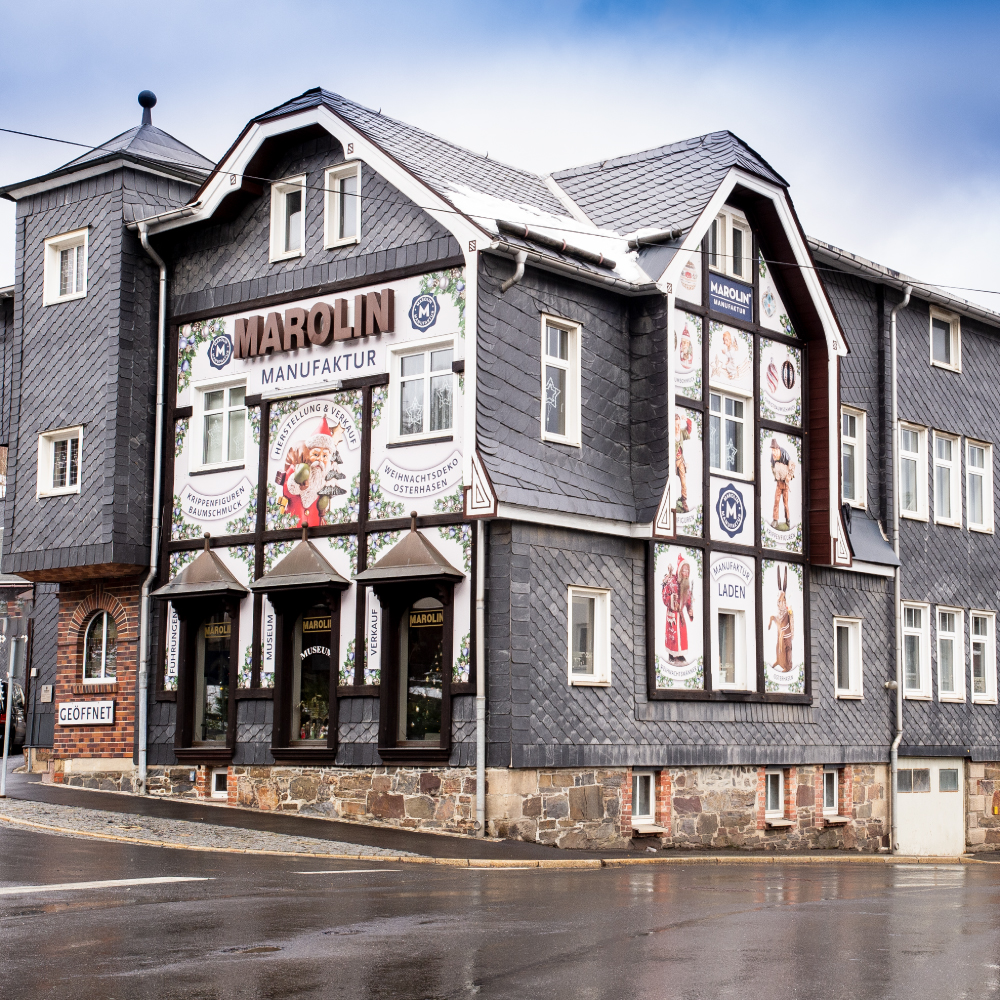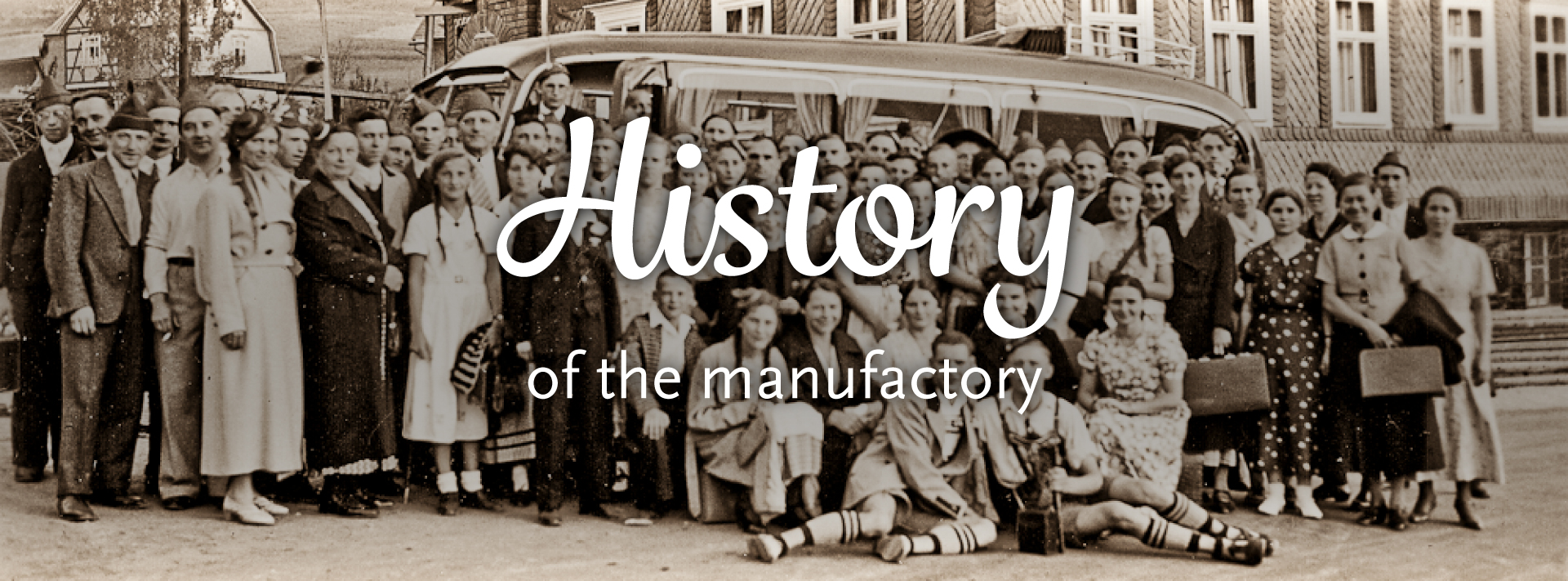

THE FAMILY
The company Richard Mahr was founded in the year 1900 by Richard Mahr (1876 - 1952), who came from Steinach/Thür. and was born in his parents' house at Räumstraße 35.
Richard Mahr, the only son of the Steinach woodworker Christoph Carl Mahr, was born in Schichtshöhn, the hometown of his mother Lisette Mathilde. Soon after his birth, the parents moved to Steinach, the father's hometown, where Richard attended school.
He learned the profession of figure painter from Rudolph Apel in Oberlind. After his apprenticeship, he pursued further training in the production of anatomical teaching aids in Berlin. He held various positions, including one in a porcelain manufactory.
On April 15, 1900, Richard Mahr married Minna Köhler, who came from Lauscha. The couple had 7 children.

THE COMPANY
Richard Mahr himself designed the first figures. These models followed the so-called „Nazarene style“ of the 19th century and were very demure in character.
All of the members of the family were involved in the production of Richard’s figures. Most of the finished products were sold through wholesale merchants in Sonneberg. In order to deliver the goods to these merchants, Minna, Richard’s wife, had to walk the 15 miles to Sonneberg with a huge basket full of figures on her back. Eventually the number of orders from the wholesalers increased and new staff had to be hired.
By 1910 besides the family there were ten workers and one apprentice in the little house so it was very crowded. The first side building was added at this time to provide space for merchandise and for production

THE DESIGNER - JULIUS WEIGELT
Around 1920 the Steinach-born designer Julius Weigelt joined the company. From then on he alone designed the figurines for MAROLIN®. His designs were rather traditional in style, much like those designed by Josef Bachlechner in Tyrol in the 1920s.
In the 1920s Richard Mahr started to market his products himself. He had his own booth at the trade fair in Leipzig and the first catalogues were printed. The brand MAROLIN® was an established business and the collection was expanded to include glass ornaments, wax figures, Christmas tree decorations and accessories for nativity stables as well as Easter products and traditional fairy tale figures and animals.

ABOUT THE FACTORY
Moving pictures say more than 1000 words. Therefore, we walked with the camera through the production, to show you how the figures and decorations are made.
Enjoy Watching!

THE RISE - COMPANY BUILDING
In 1924 another side building was added and the staff was enlarged. Whenever possible Richard lent the staff a helping hand and Minna took care of the stockroom, which included packing and dispatching goods.
During the 1920s and 1930s the family business developed rapidly. Richard Mahr no longer sold his products in Germany only. He was already dealing with companies in Austria, France, Italy, Switzerland and Sweden. And at this time the first orders were sent abroad.
In 1922 Richard’s oldest daughter Paula married the businessman Wilhelm Kaiser who then joined the company as a bookkeeper in 1924. In 1928 Jenny, another daughter, married the banker Alfred Weigelt. He had joined the company in 1925 and was responsible for calculation and sales.

THE FALL - WORLD WAR II
At the beginning of WW II in 1939 the production of créche figures was stopped. Most of the male staff members were recruited for military service. Besides the occupation of his factory building Richard had to cope with the death of his grandson Franz who fell in Russia in 1943.
After 1945 it at first appeared as though the company could pick up where it had left off during the boom years prior to WWII. Richard Mahr re-established his contacts to former customers. But Germany was divided and that left the company within the borders of the GDR. Those in political power pursued a policy that massively intervened in private enterprise and thus the further development of the business was inhibited.

THE FIRE - THE TRAGEDY
On June 6th of 1958 there was another tragedy in the company's history:
The roof of the company building and the crates shed, large parts of the storage rooms and the studio were reduced to ashes. The flames, the smoke, and especially the extinguishing water destroyed large quantities of blanks, and the entire inventory - and this just before the deliveries should be made for the upcoming Christmas season.
The living quarters of the Mahr family on the first floor had to be completely cleared. The cause of the fire is still unclear. It took more than two years until the damage was repaired and work could go on like it was before.

LOST FOREVER
During the 60s the production of créche figurines became less important because there were restrictions on exports to non-communist countries and in the GDR religious figurines could not be marketed.
Then finally in 1972 the company was taken over by the state and in the following years effectively dismantled. All surviving production facilities were taken away and neglect and poor-quality repair work left the company buildings in sad structural condition. Even worse for the company was the destruction of the remaining figures and molds.

ENRICHMENT
By the beginning of the 1960s MAROLIN® was continuing the production of the well-known LINEOL® animal and Indian figures.
Earlier they had been made by the LINEOL® Company that was in the town of Brandenburg, but by the 60s LINEOL® had already been expropriated by the state. Around that time plastic figures became very popular and MAROLIN® decided to scale down the LINEOL® molds to 80% of the original size.
Production methods were also changed to injection molding. In the following years the sale of these figures went very well and thousands were made and sold.

THE EXPROPRIATION
At the beginning of 1972 the GDR implemented a public participation that existed only a view weeks. In April of the same year the company was completely taken over by the state.
Another small company - the Christoph Berger manufacture - was affiliated.
Up to 1975 the to the company worked autonomous but lost its independence when connecting to the state company VEB PLAHO.
In 1974 MAROLIN® had a booth on the Leipzig fair and took part in the Nuremberg toy fair for the last time.
In that time around 110 people worked in the factory. 30 of them worked as homeworkers.

THE LEGACY
Between 1972-1990 only a few investments were made under the communist regime. Resources and machines were dismantled and moved to other public-owned companies.
All surviving production facilities were taken away and neglect and poor-quality repair work left the company buildings in sad structural condition.

THE RESTART
Following the German re-unification and re-privatization in 1990, a courageous step was taken to re-launch what remained of MAROLIN®.
At first Richard Mahr’s grandchildren started producing the successful plastic figures, but soon the many cheap Far East competitors mitigated this success.
Recollecting their MAROLIN® origins, the family tried to retrieve the recipe for the old papier mâché mixture. But alas! No former staff members were still alive and there were no written records of the old recipe.
But then while cleaning up the cellar, a door that had been closed for years was opened. And there, barely legible, written by hand with chalk was the original recipe for MAROLIN® papier mâché!

OBITUARY - WALTER GREINER
After he had applied and enforced the reprivatization Walter Greiner influenced with high technical knowledge and skills the restart of the company during the early 19990s. His activeness on the toy markets of the world working for the former „Kombinat Spielwaren“ made it possible to build up international sales channels without delay and to expand.
Walter Greiner worked from dawn to night in the company and managed all the work that had to be done. After four years of unremitting creativity he could share the first success with his colleagues. The company had now - not at least because of the craftsmanship, the efficiency and reliability of their employees - found back to world market in a difficult period of reconstruction.
In the summer of 1994 - on his way home from a delivery trip along the Erzgebirge - Walter Greiner died in a tragic car accident.

THE 1990´S
With new vigor the staff met the challenge and started manufacturing the old figures.
Most of the existing molds had to be repaired, but in the meantime there are more than 1,500 assorted articles in the current line of products.
The people working for MAROLIN® still cling to the original philosophy of Richard Mahr and have not strayed from using his original techniques.

THE 2000´S
The constant demand for the original MAROLIN® - articles guaranteed a slow but steady growth of the company. The result: in the years after 2000, large parted of the company building could be renovated extensively and a factory outlet store was built. In 2006 a small museum was established that documents the history of the company impressively.
In 2011, the MAROLIN® assortment was expanded to include nostalgic Christmas tree decorations.

TODAY
Even today, the family business is still owned by the founding family, the granddaughter of the company founder, Evelyn Forkel, has taken on the venerable task and has been running the company for several years.
In 2023 there are 10 permanent employees in the company, who make the figures something very special with their skills.
Since 2019, our standard range has not only included decorative items, but also interior furnishings such as lamps in various designs.
We are still striving to expand the nostalgic Christmas tree decorations with other "old" forms.
In response to several inquiries, we were able to add another new product direction to our range in 2023. Halloween pumpkins, witches and ghosts are now also an integral part of MAROLIN®.

